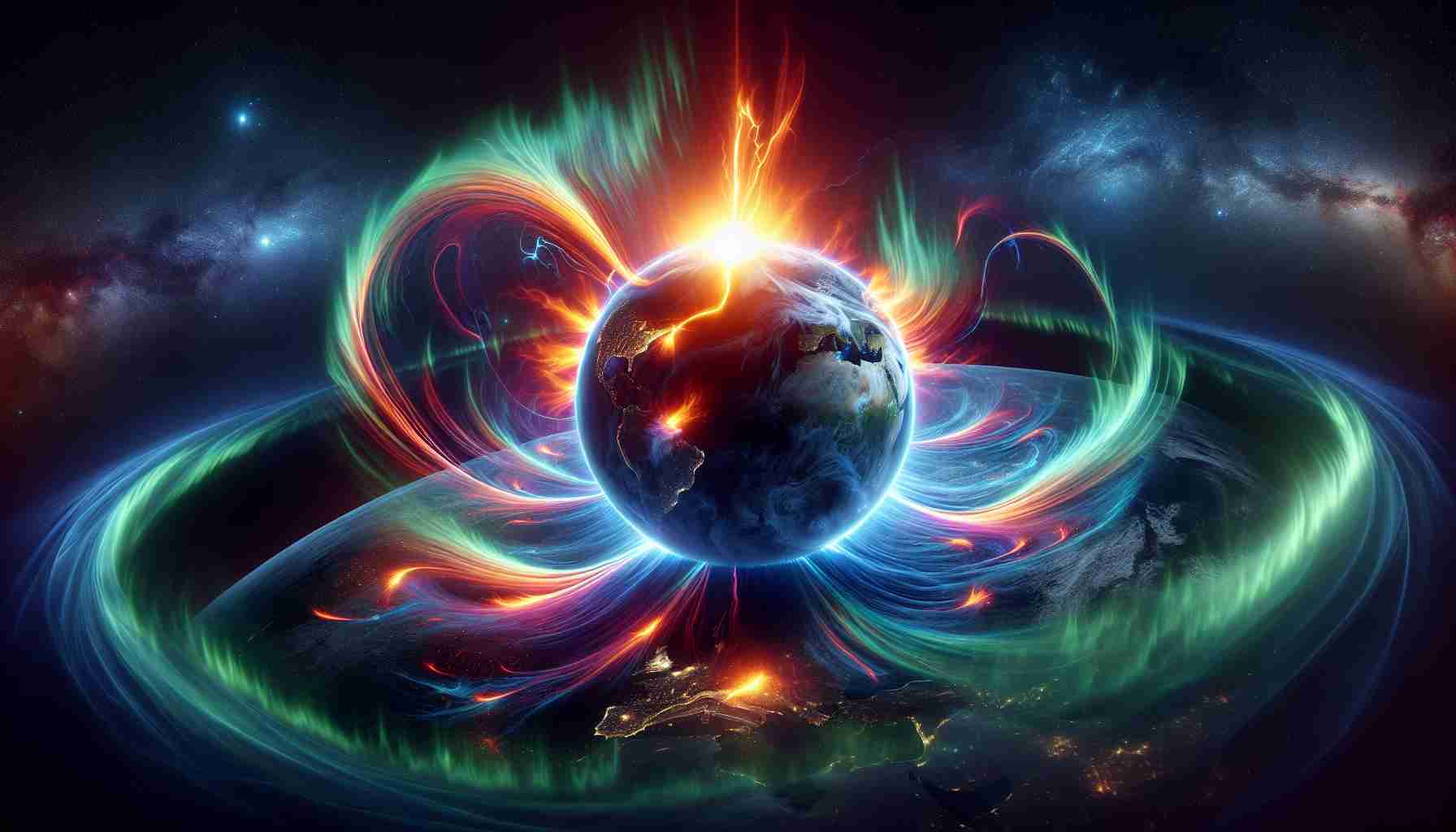- May 2024 witnessed vibrant red auroras in Ladakh, resulting from a significant solar storm.
- This event led to the formation of two temporary energy belts around Earth, composed of high-energy particles.
- NASA’s CIRBE satellite played a crucial role in discovering these belts, which pose implications for satellite operations.
- The new belts contain a mix of electrons and protons, indicating a strong influence of the solar storm.
- Understanding these phenomena is essential for spacecraft in geostationary orbits as they navigate these dynamic environments.
- Future solar activity may affect the longevity and impact of these energy belts on Earth’s magnetosphere.
May 2024 brought a spectacular scene to the skies of Ladakh, where vibrant red auroras lit up the heavens during one of the most powerful solar storms in two decades. This breathtaking display wasn’t just a feast for the eyes; scientists uncovered an intriguing phenomenon hidden from view—a pair of temporary energy belts now enveloping our planet.
Triggered by intense waves of charged particles from the Sun, this solar storm generated two new belts of high-energy particles, as revealed by NASA’s compact CIRBE satellite. Orbiting Earth’s magnetic poles, this trailblazing satellite unveiled how solar chaos can influence our technology, igniting alarms across global space agencies, including India’s ISRO, to protect their satellites from the tempest.
These newly formed belts, nestled between the permanent Van Allen Belts, contain a mix of electrons and energetic protons, marking a significant shift in the energetic landscape surrounding Earth. Experts noted the importance of this discovery, particularly for spacecraft venturing into geostationary orbits, as they must navigate through these regions multiple times during their ascent.
While transient energy belts have been spotted before, the inclusion of protons in these new formations signifies a unique impact, hinting at the storm’s sheer force. As scientists continue to unravel the complexities of solar storms, the resilience of these belts may hinge on future solar activity, determining how long they will influence our planet’s magnetic environment.
Key Takeaway: The stunning auroras are a mere glimpse of a deeper reality—solar storms can shape not just our skies but the very framework of Earth’s magnetosphere, underscoring their profound impact on our technological world.
Unveiling Earth’s Energetic Secrets: The Incredible Impact of the May 2024 Solar Storm
The Effects of the May 2024 Solar Storm on Earth’s Environment
In May 2024, a remarkable solar storm illuminated the skies over Ladakh with vibrant red auroras, revealing not just a visual spectacle, but also significant scientific discoveries. This solar event led to the formation of two temporary energy belts around Earth, composed of electrons and energetic protons, marking a notable change in our planet’s energetic environment.
Understanding Temporary Energy Belts
The solar storm released intense waves of charged particles, which were captured and analyzed by NASA’s CIRBE satellite. These insights have highlighted the potential risks associated with increased solar activity, including disruption to satellites and other space technologies. Notably, this phenomenon plays a crucial role in the protection strategies employed by space agencies like ISRO, which must anticipate and mitigate the impacts of solar storms on their operations.
Key Insights from the Solar Storm:
– Formation of New Energy Belts: This solar storm created two new belts located between the existing Van Allen Belts, contributing to our understanding of Earth’s electromagnetic environment.
– Implications for Technology: The presence of these new belts poses challenges for spacecraft, particularly those operating in geostationary orbits, as the increased activity in these regions could impact satellite functionality.
– Future Solar Activity: The resilience and duration of these newly formed belts are closely tied to future solar events, which means ongoing monitoring and research are essential to predict potential technological repercussions.
Related Questions
1. What are the potential risks of solar storms on satellites?
– Solar storms can cause increased radiation exposure for satellites, leading to potential malfunction or damage to their onboard systems, and can disrupt communication signals.
2. How frequently do solar storms of this magnitude occur?
– Strong solar storms, similar to the May 2024 event, are relatively rare. Scientists estimate that significant solar events capable of creating substantial auroras and energy belts occur approximately every 10-12 years.
3. What measures can space agencies take to protect satellites from solar storms?
– Space agencies utilize forecasting models to predict solar activity, implement shielding technologies for spacecraft, and develop strategies to temporarily shut down sensitive operations during severe solar events.
Additional Information
The implications of these solar phenomena extend beyond immediate concerns for technology; they also challenge our understanding of space weather and its influence on Earth’s atmosphere. As research continues, scientists are likely to explore how solar storms contribute to various environmental and technological factors.
For more insights into solar storms and their effects, visit NASA’s official website.













